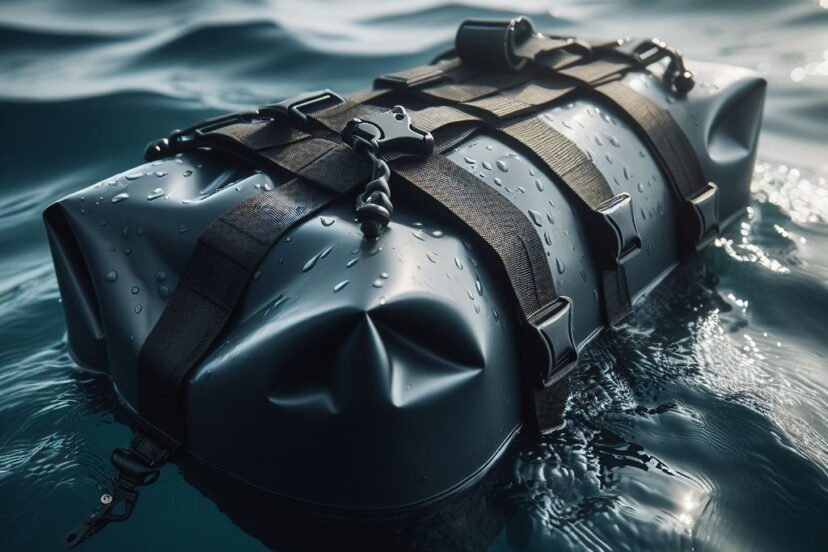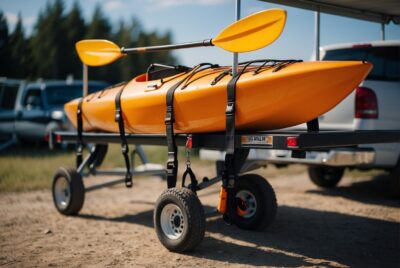Dry Bag for Kayaking: Your Essential Companion on the Water
*We may earn a commission for purchases made using our links. Please see our disclosure to learn more.
Dry Bag for Kayaking: Your Essential Companion on the Water
Introduction
As someone who has spent countless hours gliding through waters in my kayak, I’ve come to understand the crucial role of a dry bag. Not only do they protect your essentials from getting drenched, but they also offer peace of mind, allowing you to focus on the beauty and thrill of kayaking. My journey with kayaking has been filled with both serene and challenging moments, and in each, my trusty dry bag has been a constant companion.
Understanding Dry Bags
When it comes to kayaking, the significance of understanding dry bags cannot be overstated. A dry bag is a specialized type of bag designed to keep your belongings safe and dry in wet environments, particularly during water-based activities like kayaking. These bags are meticulously crafted from waterproof or water-resistant materials such as PVC or heavy-duty nylon, which are known for their durability and ability to withstand rigorous use.
One of the key features of a dry bag is its unique closure system – usually a roll-top closure – which not only seals out water but also traps air, allowing the bag to float if it accidentally falls into the water. This feature is especially crucial in kayaking, where the risk of water exposure is high. Dry bags come in various sizes and shapes, catering to different needs and types of gear. From small bags that can hold personal items like wallets and phones to larger ones capable of storing clothes, food, and even sleeping gear, there’s a dry bag for every kind of kayaker. Understanding the different types and their specific uses helps kayakers make informed decisions, ensuring that their gear remains dry and secure, no matter the conditions they face on the water.
Choosing the Right Dry Bag for Kayaking

Size and Capacity
The right size is paramount. For day trips, a 10-20 liter bag usually suffices, allowing you to carry snacks, a small first-aid kit, and extra clothing. For longer expeditions, larger bags ranging from 30 to 40 liters are better suited to accommodate sleeping gear, larger food supplies, and additional clothing.
Material and Durability
The material of a dry bag dictates its durability and waterproofing. PVC and heavy-duty nylon are top choices for their robustness and ability to withstand rough conditions. Look for bags with reinforced seams and a thick material grade.
Closure Types
The most common type is the roll-top closure, providing an effective seal against water entry. Ensure the bag you choose has a closure system that’s easy to use yet secure, as this is crucial in maintaining the waterproof integrity of the bag.
Additional Features in a Dry Bag for Kayaking
Consider bags with additional straps for easier carrying, external pockets for quick access items, and reflective strips for visibility in low light. These features can significantly enhance convenience and safety.
Top Dry Bag for Kayaking Recommendations
- MARCHWAY Floating Waterproof Dry Bag Backpack
- Sizes Available: 5L, 10L, 20L, 30L, 40L
- Features: Roll-top closure, keeps gear dry for various activities including kayaking, rafting, boating, and more.
- Earth Pak Waterproof Dry Bag
- Roll Top Dry Compression Sack
- Additional Feature: Comes with a waterproof phone case
- Suitable for kayaking, beach activities, rafting, boating, hiking, camping, and fishing.
- HEETA Waterproof Dry Bag
- Sizes Available: 5L, 10L, 20L, 30L, 40L
- Design: Roll-top, lightweight dry storage bag backpack
- Comes with a phone case, ideal for travel, swimming, boating, kayaking, camping, and beach activities.
Packing Tips for Your Dry Bag for Kayaking
Effective packing is an art. Start by categorizing items based on use frequency. Keep items like snacks, water, and a first-aid kit at the top for easy access. Distribute weight evenly to maintain balance in your kayak. A well-balanced bag contributes to a stable and enjoyable kayaking experience. Heavier items should be centered and lower in the bag to keep the kayak’s center of gravity low, enhancing stability.
Maintenance and Care for Dry Bags
- Cleaning and Storage: Post-trip care is vital. Rinse your dry bag with fresh water, especially if it’s been exposed to saltwater, and allow it to air dry completely before storage. Store it in a cool, dry place away from direct sunlight to prevent material degradation.
- Common Wear and Tear: Regular inspections for any signs of wear, like cracks or seam damage, can extend the life of your dry bag. Address minor damages promptly to prevent them from worsening.
Conclusion
In summary, selecting the ideal dry bag for kayaking is not merely a choice; it’s an investment in your kayaking adventures. As we’ve explored, the right dry bag serves as an indispensable ally against the unpredictable nature of water sports. Furthermore, it ensures that your belongings, from electronics to essential gear, remain dry and secure, thereby enhancing your overall experience.
FAQs
- Can I use a regular backpack instead of a dry bag? While regular backpacks might seem convenient, they lack the waterproof capabilities of a dry bag, making them unsuitable for kayaking where water exposure is inevitable.
- How do I determine the right size for my dry bag? The size depends on the length of your trip and the items you need. For day trips, 10-20 liters should suffice, but for overnight or multi-day trips, consider larger sizes.
- Are dry bags completely waterproof? High-quality dry bags are designed to be fully waterproof, provided they are sealed correctly. Always follow the manufacturer’s instructions for sealing to ensure maximum protection.
- Can I use dry bags for activities other than kayaking? Dry bags are versatile and ideal for any activity where water exposure is a concern, like rafting, boating, or even hiking in rainy conditions.
- How often should I replace my dry bag? With proper care and maintenance, a high-quality dry bag can last for years. Regular inspection and prompt repair of minor damages can prolong its lifespan.




